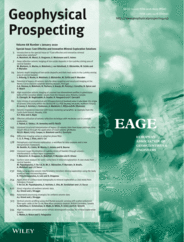-
f Petrophysics and mineral exploration: a workflow for data analysis and a new interpretation framework
- Source: Geophysical Prospecting, Volume 68, Issue 1 - Cost‐Effective and Innovative Mineral Exploration Solutions, Jan 2020, p. 178 - 199
-
- 07 Sep 2018
- 07 Aug 2019
- 10 Dec 2019
Abstract
As mineral exploration seeks deeper targets, there will be a greater reliance on geophysical data and a better understanding of the geological meaning of the responses will be required, and this must be achieved with less geological control from drilling. Also, exploring based on the mineral system concept requires particular understanding of geophysical responses associated with altered rocks. Where petrophysical datasets of adequate sample size and measurement quality are available, physical properties show complex variations, reflecting the combined effects of various geological processes. Large datasets, analysed as populations, are required to understand the variations. We recommend the display of petrophysical data as frequency histograms because the nature of the data distribution is easily seen with this form of display. A petrophysical dataset commonly contains a combination of overlapping sub‐populations, influenced by different geological factors. To understand the geological controls on physical properties in hard rock environments, it is necessary to analyse the petrophysical data not only in terms of the properties of different rock types. It is also necessary to consider the effects of processes such as alteration, weathering, metamorphism and strain, and variables such as porosity and stratigraphy. To address this complexity requires that much more supporting geological information be acquired than in current practice. The widespread availability of field portable instruments means quantitative geochemical and mineralogical data can now be readily acquired, making it unnecessary to rely primarily on categorical rock classification schemes. The petrophysical data can be combined with geochemical, petrological and mineralogical data to derive explanations for observed physical property variations based not only on rigorous rock classification methods, but also in combination with quantitative estimates of alteration and weathering. To understand how geological processes will affect different physical properties, it is useful to define three end‐member forms of behaviour. Bulk behaviour depends on the physical properties of the dominant mineral components. Density and, to a lesser extent, seismic velocity show such behaviour. Grain and texture behaviour occur when minor components of the rock are the dominate controls on its physical properties. Grain size and shape control grain properties, and for texture properties the relative positions of these grains are also important. Magnetic and electrical properties behave in this fashion. Thinking in terms of how geological processes change the key characteristics of the major and minor mineralogical components allows the resulting changes in physical properties to be understood and anticipated.




